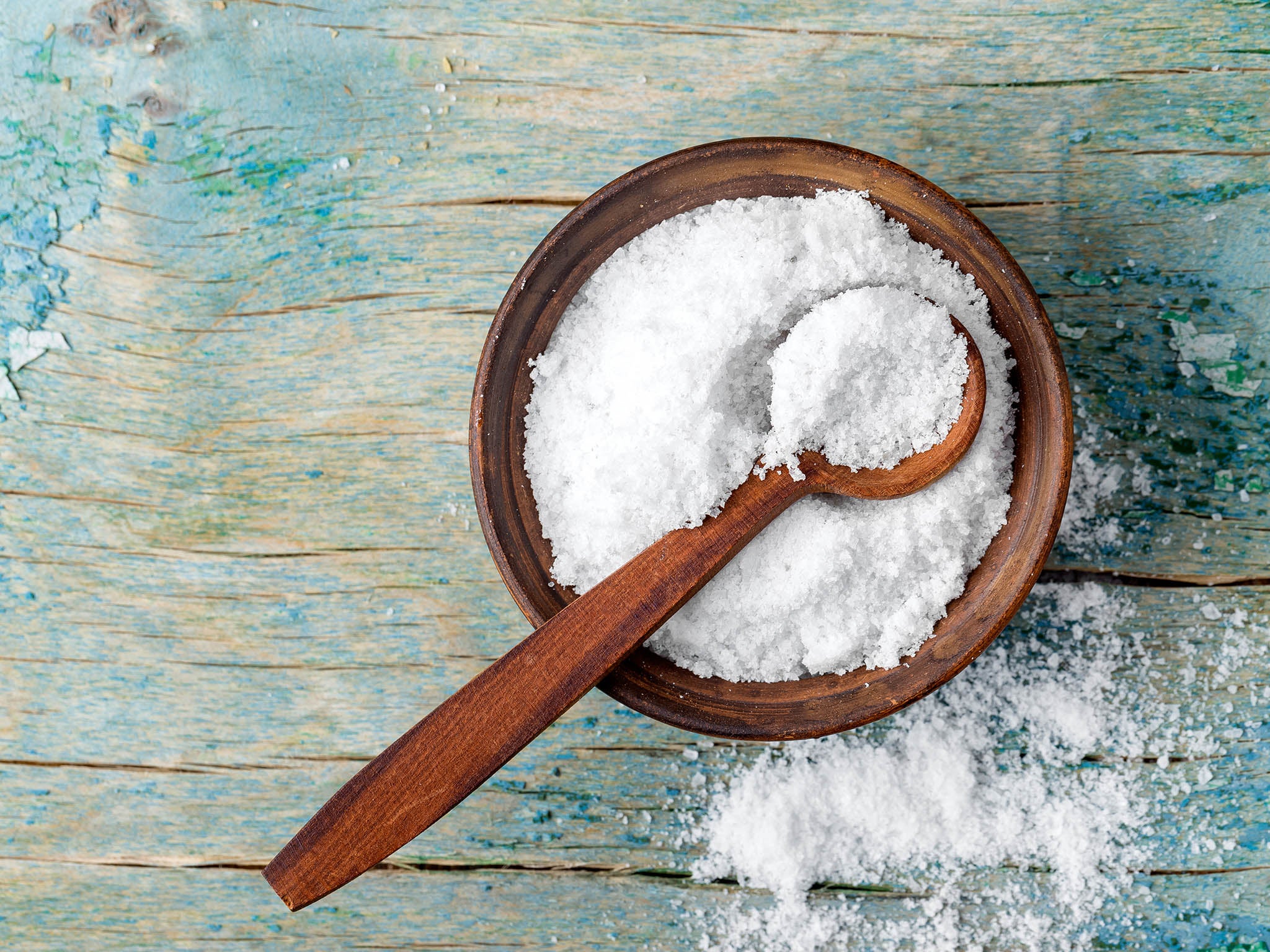The Independent's journalism is supported by our readers. When you purchase through links on our site, we may earn commission.
Salt Awareness Week 2019: Is it really as bad as we're led to believe?
We need this mineral to transmit nerve impulses, move muscles and for balanced fluid levels. But a reduction of it cuts the likelihood of stroke and heart attack. So, asks Julia Platt Leonard, where do we draw the line?


Your support helps us to tell the story
From reproductive rights to climate change to Big Tech, The Independent is on the ground when the story is developing. Whether it's investigating the financials of Elon Musk's pro-Trump PAC or producing our latest documentary, 'The A Word', which shines a light on the American women fighting for reproductive rights, we know how important it is to parse out the facts from the messaging.
At such a critical moment in US history, we need reporters on the ground. Your donation allows us to keep sending journalists to speak to both sides of the story.
The Independent is trusted by Americans across the entire political spectrum. And unlike many other quality news outlets, we choose not to lock Americans out of our reporting and analysis with paywalls. We believe quality journalism should be available to everyone, paid for by those who can afford it.
Your support makes all the difference.How much salt do you consume every day? Government guidelines say we should limit our intake to no more than 6g per day, but if you’re like me, that doesn’t mean a lot. So I got out my kitchen scales and weighed it. Turns out 6g is the equivalent of 1 teaspoon. I looked at the small pile of white crystals, and imagined sprinkling salt over my fried eggs in the morning or whisking some into a vinaigrette or seasoning a steak before grilling. Suddenly 6g didn’t seem like a lot.
But Action on Salt – the group behind Salt Awareness Week, which runs from 4 to 10 March – wants us to meet that 6g target and more. We average around 8.1g a day, so we’re looking at just over a 25 per cent reduction. But the benefits, they say, are huge: this would reduce strokes by 22 per cent, heart attacks by 16 per cent and save 17,000 lives. They say we can wean ourselves off salt and after a few short weeks, won’t even notice it. Eventually, the goal by 2025 is to lower our salt intake to only 3g or half a teaspoon.
So what is salt anyway? It’s a mineral; its scientific name is sodium chloride. While salt gets a lot of bad press it’s also an essential nutrient. We can’t live without it and our bodies can’t make it. It’s used to transmit nerve impulses, move muscles, and maintain balanced fluid levels. We don’t need a lot to do these functions. A Harvard Medical School publication says the Yanomami people of the Amazon rainforest get by on only about one tenth of a teaspoon of salt per day. On the flip side, some people in Northern Japan consume over 11 teaspoons.
So where’s the problem? The issue is that a diet high in salt can cause raised blood pressure. High blood pressure can increase your risk of heart disease and stroke. Professor Graham MacGregor, chair of Action on Salt and a staunch proponent for salt reduction, says raised blood pressure is the leading culprit behind heart disease and stroke. He adds that reducing salt is the biggest change we can make to reduce rates of both. “The evidence is overwhelming,” he says.
So how do you get people to use less salt? MacGregor says one of the best ways is to work with the food industry to lower the amount of salt in processed and prepared foods. “Instead of persuading people to do something, we’re doing it for them,” he says. Since 2005, the food industry has reduced the amount of salt in many popular foods by around 30 per cent.
The reason that’s such a big win is that 75 to 80 per cent of the salt we consume comes from processed foods – ready meals, soups, sauces – but also bread and cereals, cheese and cured meat. MacGregor says consumers don’t even know their favourite brand of crisps now has less salt. “It doesn’t cost the government very much,” he says. “It doesn’t cost the food industry very much and yet it’s very effective in reducing strokes and heart disease.”
This all sounds great and most experts agree that reducing salt is a good thing – but not everyone thinks it’s the magic bullet. Dr James DiNicolantonio is a cardiovascular research scientist and author of The Salt Fix: Why the Experts Got it All Wrong and How Eating More Might Save Your Life. He says the scientific link between salt intake and heart disease and stroke is dubious at best and that another white powder – sugar – is the bigger culprit. He and others point to flaws in testing methodology, and a desire to link salt and heart disease meaning the role of other factors including obesity is ignored.
If the message is confusing for consumers, for the keen cook, it isn’t. The late Marcella Hazan said in Essentials of Classic Italian Cooking to add “no less than 1 ½ tablespoons of salt” to boiling water, per pound of pasta. In another book, Marcella’s Italian Kitchen, she devotes over a page to salt, saying, “The undiscriminating condemnation of salt is one of the least savoury manifestations of gastronomic fashion” and hailing salt as a culinary “magnet”.
For chef and food writer Samin Nosrat, salt is the starting point for her book Salt, Fat, Acid, Heat: Mastering the Elements of Good Cooking. “Salt has a greater impact on flavour than any other ingredient,” she says. It softens bitterness, tames sweetness and brings out flavour in almost any food. She’s generous with salt and recommends salting a chicken the day before cooking, something I’d never done before as I worried it would dry out the meat – salt draws out moisture.
I took her challenge, and cut a whole chicken in half. I soaked both halves in buttermilk overnight, adding two teaspoons of salt (sorry, Professor MacGregor) to one of the mixtures. The next day, I poured off the brine and roasted both halves. I sprinkled salt on the non-salt brine chicken, as I normally would have done, right before roasting. A blind taste test and the salt brine chicken won hands down. I expected it to taste saltier but it wasn’t salt I picked up but the fact that the meat was moister and more succulent – it wasn’t dry at all.
Nosrat says water for blanching vegetables should be as salty as the sea. Nervous? She points out that most of the salt goes down the drain. So why bother? Because a bit of cooking alchemy happens when you use salt. The vegetables are greener, they taste better and brighter and surprise, surprise, you use less salt at the table. And if vegetables taste better – in fact if any home cooked food tastes better – isn’t that a good thing?
At the end of the day, I’m not sure how much salt I consume each day. I love a slice of prosciutto and won’t say no to a gooey goat’s cheese, but rarely eat a takeaway and never a ready meal. I prepare most of the food I eat, adding salt to taste, as cookery writers love to advise. If the goal of Salt Awareness Week is awareness then I’m sold. Knowing that most of the salt we consume comes from processed food has made me aware of the hidden amounts we all could be eating every day.
Salt Awareness Week runs from 4 to 10 March
Join our commenting forum
Join thought-provoking conversations, follow other Independent readers and see their replies
Comments